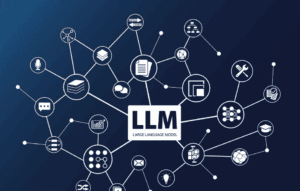1. Understanding the Dify + MCP Integration for Modular AI Systems
In the current trend where AI engineering is transitioning from "single-point functions" to "intelligent system integration," how models securely, standardly, and with low code connect to the toolchain is becoming a decisive issue for the implementation of AI capabilities.
???? MCP (Model Context Protocol) is a universal protocol standard introduced by Anthropic, aiming to solve the interconnection problem between AI models and external systems. Its goals are:
• ✨ Provide AI with a universal interface to "use tools."
• ???? Standardize the data calling protocol between models and services.
• ???? Create a "standard connection specification" for AI, similar to USB-C.
Dify serves as an ideal "server-side building framework" for the implementation of MCP.
It encapsulates functions originally used to build Chatbots and Workflows into a registerable MCP Server through zero-code configuration + private deployment capabilities, helping product managers and engineers achieve "Lego-style assembly" of AI capabilities.
In this article, we’ll explore how Dify + MCP enables no-code, scalable, and composable AI workflows—perfect for real-world applications.
2. What is MCP Model Context Protocol ? Why is it becoming the "HTTP Protocol of AI Engineering"?
Let's quickly review the essence of MCP.
MCP is a calling protocol designed for models. Unlike traditional APIs (where humans write code to call tools), the goal of MCP is to allow AI models to "autonomously" call tools.
???? Protocol Support Capabilities:
| Feature | Description |
|---|---|
| Multi-model Support | Supports Claude, GPT, Gemini, etc. |
| Communication Method | JSON-RPC + SSE (supports asynchronous and streaming) |
| Tool Interface Standard | Each MCP Server describes its functions through OpenAPI |
| Call Structure | initialize → list_tools → call_tool loop |
???? MCP is a standard, lightweight, and open tool protocol, akin to a "USB-C + WebSocket" hybrid protocol standard in the AI world.
3. How to Use Dify as an MCP Server?
Traditional MCP Servers generally require engineers to manually develop FastAPI / Flask services and write metadata and OpenAPI files. Dify does something smart:
It packages Chatflow and Workflow applications as MCP tools and registers them as standard Server interfaces through UI configuration, without writing a single line of code.
???? Configuration path is as follows:
- Install the Dify plugin module
Dify as MCP Server. - Select an existing Dify application (chat or workflow).
- Configure necessary parameters (API Key, description information, Server URL).
- Register the Server in Claude Desktop or CherryStudio, and fill in the URL:
https://your-dify-instance.com/api/plugin-endpoint/difyapp_as_mcp_server/mcp-jsonrpc✅ Supports Two Types of MCP Tools:
| Type | Tool Name | Parameter Requirements |
|---|---|---|
| Chatflow Chatbot | dify_chat | messages[], inputs |
| Workflow Execution | dify_workflow | inputs (supports structured fields) |
???? Additionally, Dify MCP implementation supports two key endpoints of MCP:
• /mcp-jsonrpc: Handles model initialization, tool list, execution requests.
• /mcp-sse: Handles long connection tasks, streaming conversations, connection lifecycle management.
4. Engineering Value: Perfect Compatibility of Standardization vs Flexibility
Dify's MCP capabilities bring three very practical values to AI product managers and system architects:
???? Zero-Code Integration, Extremely Low Development Threshold
No longer need to write API services; you can turn an AI application into a model-callable plugin with just a few clicks, plug-and-play.
???? Meets Enterprise-Level Deployment Needs
• Can be deployed on private servers, suitable for sensitive scenarios such as finance, healthcare, and government systems.
• Supports API Key authentication, permission isolation, and log auditing for security mechanisms.
• Easier integration with existing systems (such as OA, CRM).
???? Strong Ecosystem Compatibility
• Fully compliant with the MCP protocol standard, can be directly called by clients like Claude, LangChain, AutoGPT.
• Can be registered into the MCP Server Hub in the future, achieving a "one-click tool market load".
5. Practical Scenario One: Modular AI Systems for Customer Support with Dify + MCP Toolchain
In traditional customer service scenarios, AI is just a "Q&A bot":
• User asks → Model answers → Ends
Now, Dify + MCP can build an intelligent customer service agent with "memory, knowledge, and execution capabilities," supporting:
| Capability | Component | Technical Path |
|---|---|---|
| Customer Service Q&A | Dify Chatflow | Build a knowledge Q&A bot based on RAG + prompt |
| Ticket Workflow | Workflow | Dify process nodes integrated into OA, ticket systems |
| Multi-Tool Chaining | MCP Server | Register multiple Dify applications as Claude tools |
???? Mermaid Diagram: Multi-Chain Structure of Customer Service Agent
graph TD U["User Question: How to return?"] --> AG[Agent] AG --> TOOL1["Dify Chatflow: Return Policy Q&A"] AG --> TOOL2["Dify Workflow: Generate Return Order"] TOOL2 --> TOOL3["Webhook: Write into ERP System"] AG --> RESP[Unified Output Response]
???? Actual Effect:
Claude can access this set of Dify MCP Servers to complete the full closed-loop process of "Q&A + Order Generation + System Entry."
6. Practical Scenario Two: Contract Review + Automatic Summary Workflow
Goal: Upload a contract → Automatically interpret key clauses → Compare with company policies → Output report
???? Component Modules:
• Dify Chatbot: Responsible for general inquiries, such as "Where are the risk points in this contract?"
• Dify Workflow:
• PDF Parsing → Clause Classification → Risk Control Comparison → Audit Conclusion Generation
• MCP Tool Integrated Model (such as Claude), allowing the model to have "read + judge + write" capabilities.
???? Mermaid Diagram: AI Audit Assistant Component Structure Diagram
graph TD U["Upload Contract"] --> MCP["Claude"] MCP --> CHAT["Dify Chatflow: Risk Q&A"] MCP --> FLOW["Dify Workflow: Structured Parsing"] FLOW --> STEP1["Clause Extraction"] STEP1 --> STEP2["Company Policy Comparison"] STEP2 --> STEP3["Generate Report + Notify Legal"]
???? Engineering Tips:
• Each workflow in Dify can be configured as "an MCP tool," and the model can freely combine and call according to tasks.
• The process supports the use of external plugins, such as OCR, database deduplication, contract knowledge base retrieval, etc.
7. Practical Scenario Three: AI Office Assistant = Multi-Tool Combination
Build an AI office assistant that can automatically complete the following tasks:
• Summarize the key points of this 20-page PDF.
• Turn it into a Notion page.
• Generate a structured Excel sheet.
• Notify my WeChat group.
???? Required Dify Applications:
| Tool Type | Instance | Access Method |
|---|---|---|
| Text Parsing | Document Summary Chatflow | Register as MCP Server |
| Table Generation | Form Node + xlsx Export | Dify Workflow |
| Third-Party Call | Feishu Notification Plugin | Workflow + Webhook |
???? Claude can call all components at once through the registered MCP Server, no longer relying on the plugin system.
8. Coordination Method with RAG and Agent: Not Replacement, But Integration
Many developers ask: Do I still need RAG or Agent with Dify as the MCP Server?
The answer is: Yes—and the combination of the three is the mainstream form of future AI applications.
✅ Each Position:
| Module | Role | Position in the System |
|---|---|---|
| RAG | Real-time data lookup, enhancing the knowledge of answers | Data Layer |
| Agent | Task decomposition, controlling call order and logic | Control Layer |
| MCP (Dify) | Execute specific actions, such as generating documents, calling interfaces | Execution Layer |
???? Unified System Structure Diagram (Mermaid)
flowchart TD U["User Task Instruction"] --> AG["Agent Controller"] AG --> RAG["Knowledge Lookup: RAG Component"] AG --> MCP["Dify MCP Server Tool List"] RAG --> AG MCP --> AG AG --> RESP["Output Complete Response"]
???? Practical Significance:
• RAG provides semantic support and context.
• Agent decides the process and order.
• Dify MCP tools truly execute the "hands-on part," such as reading documents, changing formats, connecting business systems.
9. Why Dify + MCP Matters for AI Engineering Teams
Combining actual project development and testing, the Dify + MCP model brings direct benefits including:
✅ Greatly Lowering the Threshold for Building "Callable AI Tools"
• Non-developers can use UI to configure tools + processes.
• Developers only need to integrate models like Claude, GPT, DeepSeek, without maintaining tool logic.
✅ Stronger Tool Reusability: Combinable, Nestable, Reusable
• A workflow can become multiple Servers.
• Supports parameterized passing, adapting to various Agent request formats.
• Can be embedded in systems like Agent, AutoGen, LangGraph to form a multi-Agent execution chain.
10. Best Practices for Building an AI Toolchain: From "Independent Service" to "Multi-Tool Ecosystem"
When building an MCP Server system based on Dify, it is recommended to follow the following architectural design principles:
✅ Tool Atomization: One Function, One Application
• Do not make all operations into one giant Workflow.
• Configure each function point separately as a Chatflow or Workflow, independently registered as an MCP tool.
• Ensure "clear interface," "clear parameters," easy to reuse and combine calls.
???? Example:
| Function | Tool Name | Recommended Type |
|---|---|---|
| Contract Summary | legal_summarizer | Chatflow |
| Data Entry into Database | db_writer | Workflow |
| Feishu Reminder Call | feishu_notify | Workflow (Webhook Module) |
✅ Model Input Standardization: Standardized Prompt Templates
Standardize how MCP tools receive input and return structures through unified prompt templates:
• ???? Unified structure for input fields: {user_input, user_id, file_id}
• ???? JSON format for output structure: {summary, key_risks, references}
• Supports fields with contextual information, such as historical dialogues, session goals, etc.
✅ Automated Registration + Multi-Agent System Integration
• Can automatically batch register MCP Server to Registry or Claude AgentHub through deployment scripts.
• Can expose tools as LangChain Tool or OpenDevin Function.
• Supports "function sharing" in multi-Agent scenarios: different roles reuse the same Server.
11. MCP vs Function Calling vs Plugin System: How to Choose?
Although MCP is not new, its engineering significance far exceeds traditional plugin systems or function calling mechanisms.
???? Comparison Table of the Three:
| Dimension | OpenAI Plugin | Function Calling | MCP (like Dify) |
|---|---|---|---|
| Model Control | Relies on OpenAI Platform | Extensible | Independent deployment, open-source |
| Standard Openness | Semi-closed (requires approval) | Private implementation, incompatible between models | Fully open-source, supports multiple models ✅ |
| Tool Ecosystem | OpenAI exclusive | Manual development | Thousands of MCP tools already on GitHub ✅ |
| Deployability | Cloud-based | Can be local | Best practices for private deployment ✅ |
| Multi-Tool Call | Weak (one at a time) | High complexity | Agent can multi-chain call ✅ |
???? Summary: MCP is a more standard, open, and easily combinable tool protocol layer.
12. How Can Enterprises Deploy the Dify MCP Server System?
For enterprise technical teams, the recommended route to deploy the Dify MCP tool system is as follows:
Architecture Diagram: Private Deployment + Multi-Tool Registration Center
flowchart TD User["Enterprise User"] Agent["Agent System (e.g., Claude, LangChain)"] RAG["Vector Database / RAG System"] ToolA["Dify App A: Knowledge Q&A"] ToolB["Dify App B: Document Parsing"] ToolC["Dify App C: Data Entry"] Reg["MCP Registry"] User --> Agent Agent --> RAG Agent --> Reg Reg --> ToolA Reg --> ToolB Reg --> ToolC ToolA --> Agent ToolB --> Agent ToolC --> Agent
Deployment Suggestions:
• Use Docker for one-click deployment of Dify + Plugin.
• Register each Chatflow / Workflow as a Tool.
• Deploy a self-built MCP Registry or directly use Claude Desktop to load.
• Combine API Key authentication, access logs, and caching strategies to enhance security.
Final Thoughts: MCP Dify, Making AI Capabilities More Like "Lego Blocks"
In the process of building an enterprise AI toolchain, Dify as an MCP Server brings the following breakthrough values:
| Dimension | Traditional Method | Dify + MCP Model |
|---|---|---|
| Tool Integration | Handwritten API, troublesome deployment | UI configuration, automatic registration ✅ |
| Tool Reusability | Difficult to migrate | Each module is reusable ✅ |
| Deployment Management | High cost | Private deployment + security control ✅ |
| Ecosystem Adaptation | Plugin or private interface | Fully compatible with Claude / GPT / LangChain ✅ |
???? It turns "development tools" into "assembly tools," allowing every engineer to build their own AI toolchain system like building with Lego.
???? Recommended Resources & Tool Collection
• ???? Dify Official Project: GitHub - langgenius/dify
• ???? MCP Standard Official Website: https://mcp.so/
• ???? Claude Desktop + MCP Client: https://github.com/cherrybuilds/claude-desktop
• ???? MCP Server Example Collection: GitHub - punkpeye/awesome-mcp-servers: A collection of MCP servers.
???? Recommended Reading
- Building an Internal AI Knowledge Base with Dify: A Case Study of A Medical Company
Find out how to leverage Dify to build an efficient AI knowledge base within your organization. This guide explores how Dify's no-code integration simplifies the creation of AI-powered knowledge management systems, boosting collaboration and productivity. - Understanding the MCP Protocol: Model Context Protocol Explained
Dive deeper into the structure and design philosophy behind MCP, the protocol enabling modular AI collaboration. - Choosing Enterprise-Private AI: Top 10 AI Models Supporting Local Deployment
Discover how to deploy private AI systems using open-source AI models for on-premise AI solutions. Learn about the key benefits of ensuring data privacy and security when deploying AI in private environments. - Enhancing WMS Efficiency with Dify OCR & LLM: AI-Driven E-Receipts System
Boost warehouse management efficiency with Dify OCR, AI workflows, and LLM. Explore how electronic warehouse receipt systems transform logistics operations.
???? If you want to deploy the **Dify + MCP **environment, build a private enterprise AI tool market, and connect business systems, please leave a message/contact us for further collaboration!



